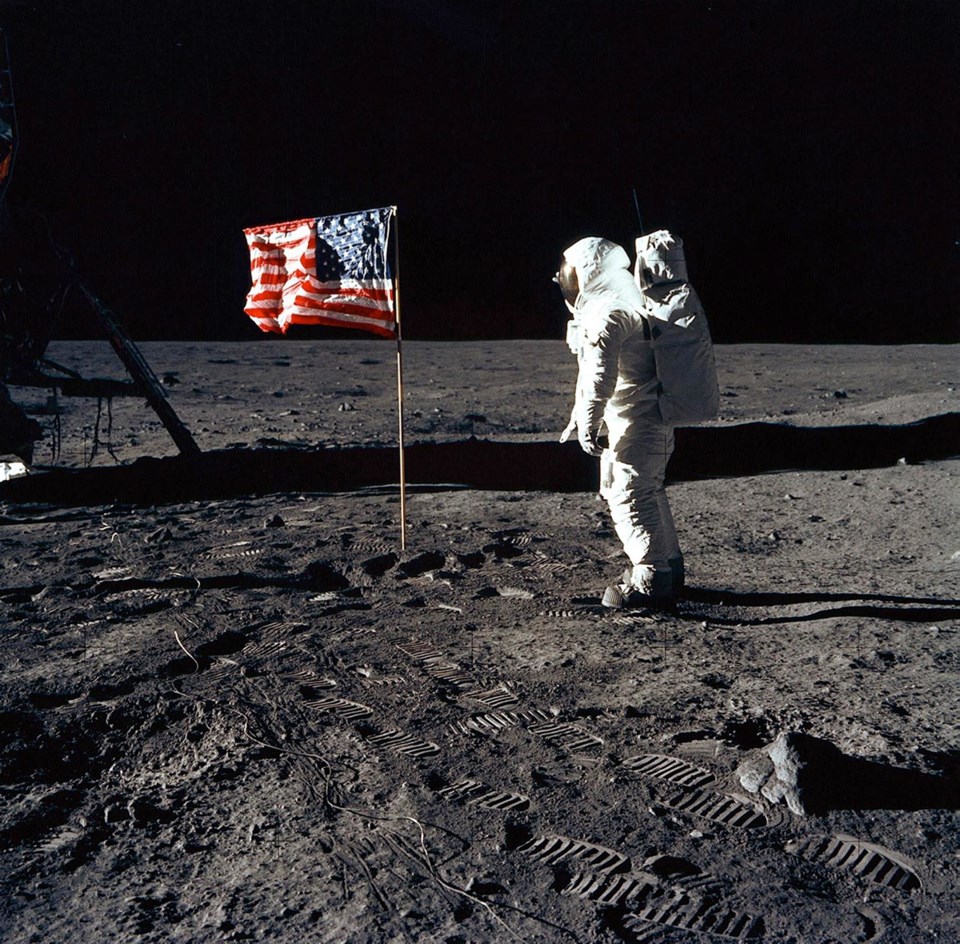It’s not enough to say that a home handyman project almost ended Chris Gainor’s view of the Apollo 11 moon landing.
First you have to understand who Gainor is: space-exploration historian, president of the Royal Astronomical Society of Canada, Fellow of the British Interplanetary Society, author of a handful of books on aeronautics and space. (He also does a wicked Winston Churchill impersonation, though that’s not relevant here.)
Gainor caught the space bug young — he remembers his father getting up early to watch coverage of John Glenn’s orbit of the Earth aboard Mercury in 1962. By the time the Gemini program arrived in the mid-’60s, the younger Gainor was a full-on space geek.
“A couple of years before Apollo 11, I bet one of my father’s friends that the Americans would land on the moon before the Russians,” he recalls. The kid won a buck.
Suffice it to say that when the day of the landing finally arrived, Gainor was, well, over the moon with anticipation. Fifty years ago this Saturday, on July 20, 1969, the 14-year-old was glued to the screen in Moose Lake, Alta., where, fortunately, the family’s under-construction summer cabin got electricity in time for a tiny black-and-white television to be plugged in.
Less fortunately, Gainor’s dad chose the lunar module’s critical 12-minute descent to the moon’s surface as the ideal time to install wood panelling around the cabin’s electrical box. “When the power went off, my father and I had a full and frank exchange of views” is the way the Victoria man now remembers it.
Happily, the power was restored in time for touchdown. The then-record TV audience of 530 million Earthlings had to wait several hours for the astronauts’ moon walk, though. Gainor’s whole family piled in to watch Neil Armstrong and Buzz Aldrin make history — the “one small step for man, one giant leap for mankind,” the planting of the U.S. flag, the phone call with Richard Nixon, the footprints that remain in the lunar dust today.
What people forget now is that the entire moon walk lasted 21Ú2 hours, with much of the latter part taken up with boring science stuff. “A lot of people saw the beginning of the moon walk,” Gainor says. “Not so many were watching by the end.”
When the rest of his family drove into town for milkshakes, Gainor was left to take in the rest of the broadcast with their dog, a Samoyed named Puff.
He did break away from the TV for a minute, though. “While they were on the moon, I did go out to the front of the cottage and look up. It was a crescent moon that night.”
That’s Gainor’s memory. If you were around, what’s yours? It was one of those communal benchmarks — VE Day, the Kennedy assassination, Paul Henderson scoring, 9Ú11 — that stand out. To many, it still represents the high point of human achievement.
The Times Colonist plans to publish a page of readers’ Apollo 11 recollections Saturday. Something similar is going on at Saanich’s Dominion Astrophysical Observatory, where written memories submitted by visitors to the Centre of the Universe — it’s open 10 a.m. to 3 p.m. today through Friday — will be displayed.
Events at the centre include a Saturday night showing of the moon walk, with Gainor doing colour commentary. Alas, the event is already fully booked, though the Friends of the DAO will sponsor three other free lectures, at 7:15 and 8:30 each night, today through Thursday. On Thursday, it’s planetary scientist and cartographer Philip Stooke talking about moon exploration after Apollo. On Wednesday, it’s DAO director emeritus Dennis Crabtree on Apollo in the Age of Aquarius.
Tonight, Gainor will lecture on Canada’s contributions to Apollo. Those contributions included the major role played at NASA by Kamloops-born Jim Chamberlin, a veteran of Canada’s Avro Arrow program. “He basically designed the Gemini spacecraft,” Gainor says.
Chamberlin was also a big part of the decision to use a lunar module that would detach from an orbiting mother ship for the landing, as opposed to a rocket that would fly directly to the moon. Chamberlin protégé Owen Maynard of Sarnia, Ont., was an important figure, too.
And don’t forget that the lunar module’s legs and struts were made in Longueuil, Que. They’re on a part of the module that was left behind. If you look at the moon tonight, they’ll still be there, right where we left them 50 years ago.
Share your moon-landing memories:
• Send an email to: [email protected] with the word “moon” in the subject line, along with your name, city of residence, and phone number (to be used for verification only).
• Fill out our online form at: timescolonist.com/more.
• Mail to: Times Colonist city desk,
2621 Douglas St., Victoria, B.C. V8T 4M2
Please limit submissions to 250 words or less. Submissions may be edited for length and clarity.



